They call him “Phil the Thrill.” Firstly, it’s a neat rhyme, but mostly because it encapsulates golf’s evergreen entertainer.
Phil Mickelson has been wowing fans with his swashbuckling style and engaging demeanor for nearly 30 years.
The Mickelson thumbs up is a trademark, as is the bashful grin, the looping swing and the black-clad gait of a gunslinger.
Being left handed has always marked him out (particularly as he’s right-handed in everything else), but Mickelson’s all-or-nothing approach and wizardry around the greens would have marked him out anyway.
There’s only one “Lefty.”

When he’s in the right mood, a Mickelson news conference is a feast, crackling and popping with insight and witticisms.
At Augusta last year he was asked to complete this sentence: “Being Masters champion is better than…”
“Well, being a Masters champion is better than not being a Masters champion,” he flashed back with that wide grin before elaborating.
“He’s got box office, always has,” says CNN Living Golf’s presenter Shane O’Donoghue.
READ: McIlroy, Mickelson, Spieth target grand slam elite
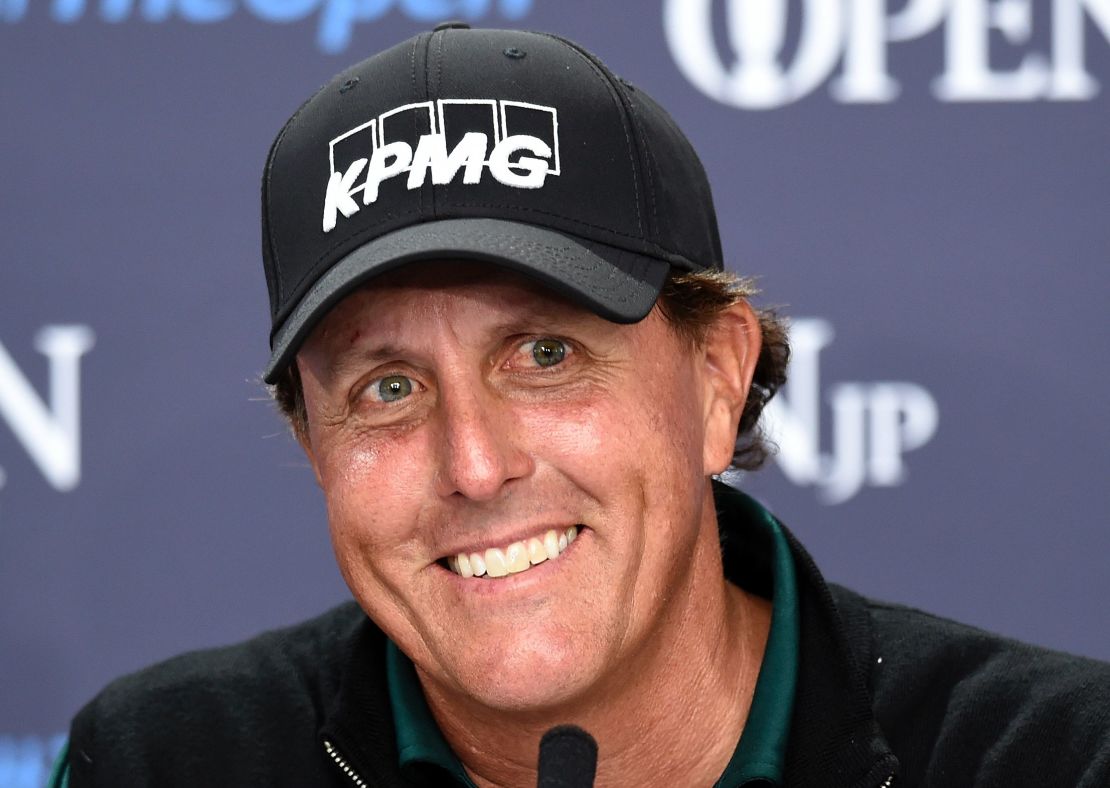
‘Phenomenal’
Mickelson, who modeled his swing on his left-handed airline pilot dad’s, made a splash in the 1991 Walker Cup, the amateur team competition, at Portmarnock in Ireland.
The fresh-faced California kid dazzled a new audience with his magical – and often high risk – short game.
The Mickelson flop shot – precariously lofting the ball nearly vertically into the air to land softly over a nearby obstacle – very quickly became a thing of legend.
“He set down a marker for what he would do in this pro career,” added O’Donoghue.
“He’s a gambler by nature, he takes calculated risks but he has enormous belief in his talent and his ability with the wedge is phenomenal.”
READ: Rory McIlroy: Holywood star with box-office appeal
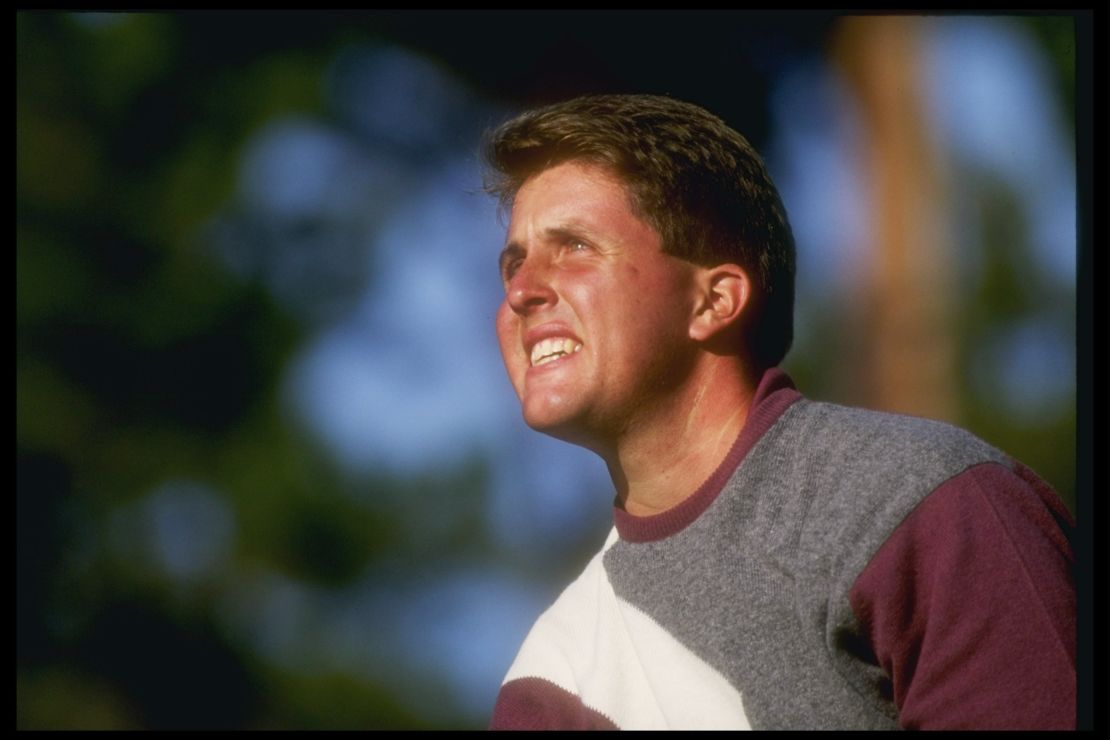
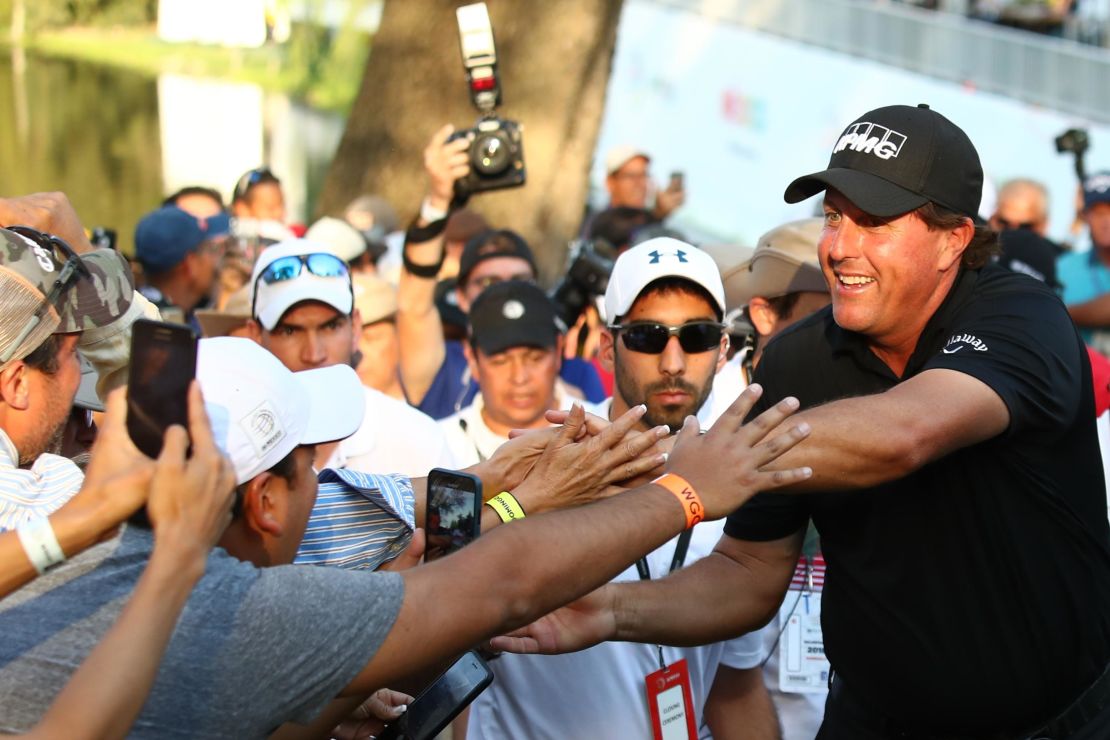
‘Human foil’
That talent and enduring love for golf has kept Mickelson at the top of the game for three decades.
At 47, he should be in the twilight of his career, but Mickelson scored his 43rd PGA Tour win this season and appears every bit as fired up and capable of adding to his five major titles and first since 2013.
In another time, Mickelson might have been The Man.
But five years into his pro career an unprecedented phenomenon hit golf by the name of Tiger Woods.
Woods’ domination slashed opportunities for the chasing pack and introduced a new dynamic of power and fitness into the game.
Mickelson, never an advocate of the gym bunny craze, remained the human foil to the machine-like Woods.
The pair weren’t close and the relationship appeared to reach a nadir in an ill-fated and ill-judged partnership at the 2004 Ryder Cup.
But Mickelson has always credited Woods with making pro golf the lucrative entity it is, and they’ve grown closer in recent years through Woods’ Ryder Cup vice-captaincy roles and shared life struggles.

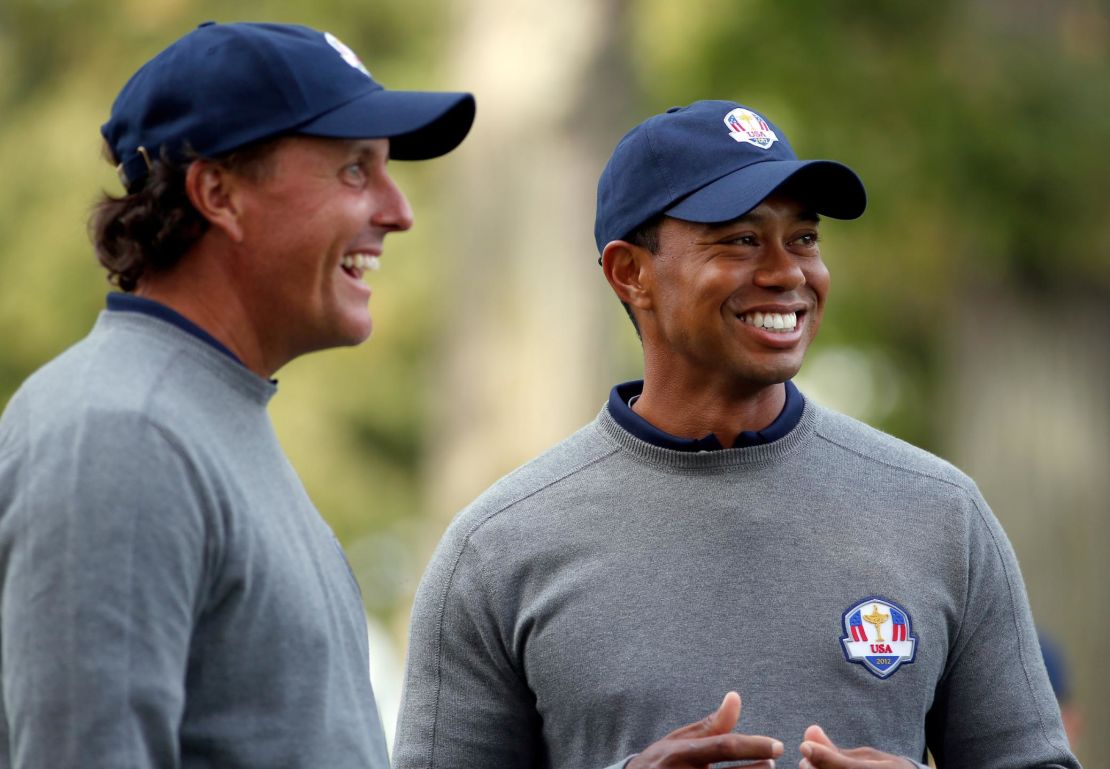
Despite Woods’ shadow, Mickelson has won – and blown – a decent share of tournaments and sits ninth on the list of all-time PGA Tour winners. Despite lengthy spells ranked second in the world, he’s never quite got to world No.1.
In the early days he was a long-time holder of that double-edged moniker “best player never to have won a major.”
He dazzled and dueled, and wracked up tournament victories, but he just couldn’t turn that talent into major triumph.
And then, after three straight thirds at Augusta, he caught fire on the back-nine on the final day in 2004 and birdied the last to beat Ernie Els by one. His first major title in his 12th full season on tour.
Mickelson’s famous leap, which has become a logo on his golf gear, is regularly brought up reporters looking for sport.
“I can assure you I was not at the apex,” he always laughs obligingly.

Masters magic
Mickelson picked up a US PGA in 2005 and added another green jacket the following year. Four years later he made it three. His 2010 win was pure Phil the Thrill.
Leading by one as the shadows lengthened on an electric final afternoon, Mickelson drove into the trees to the right of the par-five 13th. His ball nestled in pine straw, the green apparently blocked by the trunks of two towering Georgia pines. The safe option was to play back out onto the fairway.
Mickelson doesn’t do safe.
“I’m going for it,” he told his caddie Jim “Bones” Mackay to end one of the pair’s by-then legendary on-course discussions. The white-suited bagman, a fixture since 1993 and one of his best friends, wasn’t sure.
But Mickelson had seen a gap, and threaded a six-iron through the eye of a needle, across the stream that guards the green and to within four feet of the hole.
“The gap wasn’t huge, but it was big enough, you know, for a ball to fit through,” he teased reporters later.

He missed the eagle putt, but a birdie four gave him a two-shot lead and he pulled away to beat England’s Lee Westwood by three. He hugged wife Amy for what seemed like an eternity behind the green. Everyone knew why.
His third Masters title – tying him for third on the all-time list behind only Arnold Palmer (4), Woods (4) and Jack Nicklaus (6) – crowned an emotional year after both Amy and his mother Mary had battled breast cancer.
“In the last year we’ve been through a lot and it’s been tough, and to be on the other end and feel this kind of jubilation is incredible,” he said.

Cusp of a grand slam
Cementing his status as a grounded family man, Mickelson was pictured the next morning at the drive-thru counter of a Krispy Kreme doughnut shop in Augusta. Two of his three children were in the car and Mickelson was wearing his Masters green coat. “It was a little chilly, I threw on a jacket,” he said later, insisting he’d promised the kids doughnuts before they left town.
But Mickelson’s testing times weren’t over. That summer he was diagnosed with psoriatic arthritis, which renders joints swollen and painful.
Various drugs, exercise and a healthy sugar-free diet helped Mickelson keep the disease at bay.
Three years later at Muirfield, Mickelson clinched the British Open, long thought to be the one major beyond him because its traditional seaside-style links golf didn’t suit his game.
But winning the Claret Jug gave him his fifth major title and propelled him to the cusp of a career grand slam of all four majors.
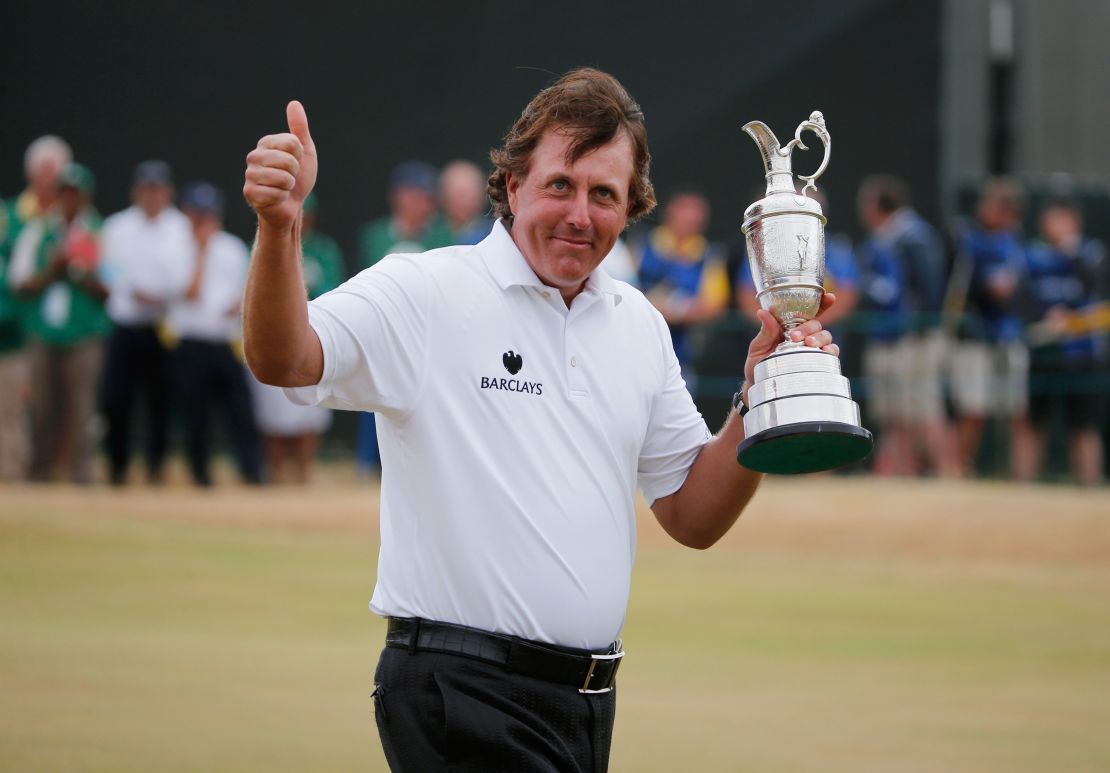
US Open ‘heartbreak’
Only the US Open still eludes him and it’s become his nemesis after a record six runner-up spots. Every year the pressure increases as he strives to join the exalted company of Gene Sarazen, Ben Hogan, Gary Player, Nicklaus and Woods as the only players to have completed the set of majors in the Masters era.
Perhaps his most agonizing of those misses was when he blew a one-shot lead with a double-bogey on the 72nd hole of the 2006 US Open at Winged Foot.
“I just can’t believe that I did that,” he said afterward. “I am such an idiot.”
Another was at Shinnecock Hills in 2004, venue for this year’s US Open. The most recent was at Merion in 2013.
“If I never get the Open,” he said after losing by one to Justin Rose, “…then every time I think of the [US] Open, I just think of heartbreak.”
In 2017, despite the pull of the grand slam, he missed the event to attend his daughter’s high school graduation.
Outside of his wins, Mickelson has had 18 top threes in majors – Nicklaus, winner of the most majors with 18, was also second a record 19 times.
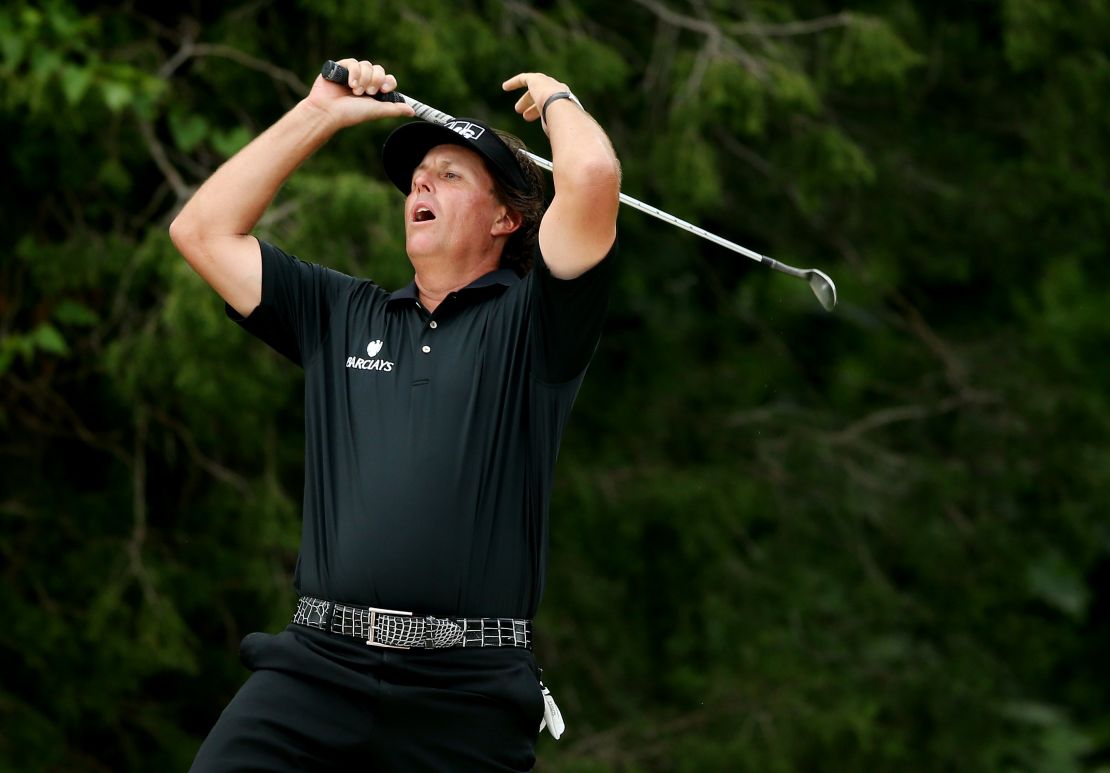
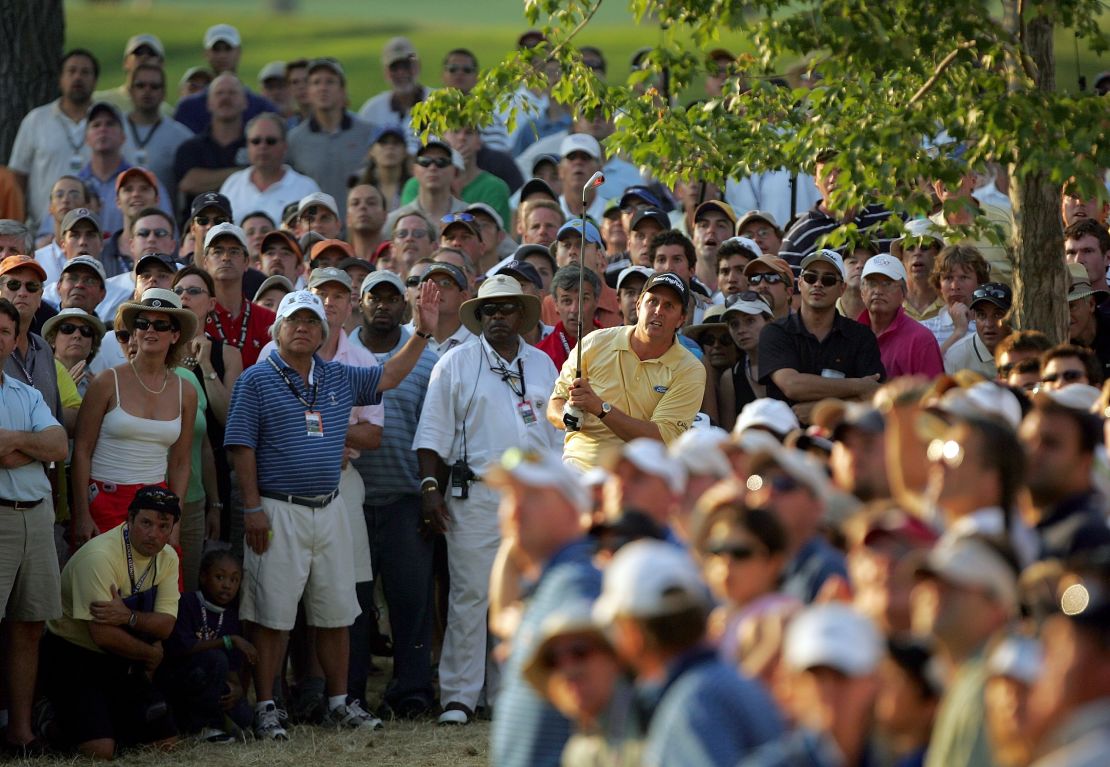
But despite the lengthy post-round autograph sessions, the fan interaction, the tales of lavish tips, the informative and entertaining interviews, the taking young players under his wing, and the unfailing sponsor obligations, any conversation about Mickelson always dredges up another of his nicknames: “Phil the Phony.”
There is – or at least there was in the early days – a school of thought that Mickelson’s mojo is a fraud, that behind the scenes he is less magnanimous than his public persona.
Even this season, Mickelson’s critics laid into him for asking Englishman Tyrrell Hatton how to pronounce his first name as they prepared to play together in Mexico. Disrespectful, cried some. Nonsense, it was Phil being a stand-up guy and trying to get it right, say others.
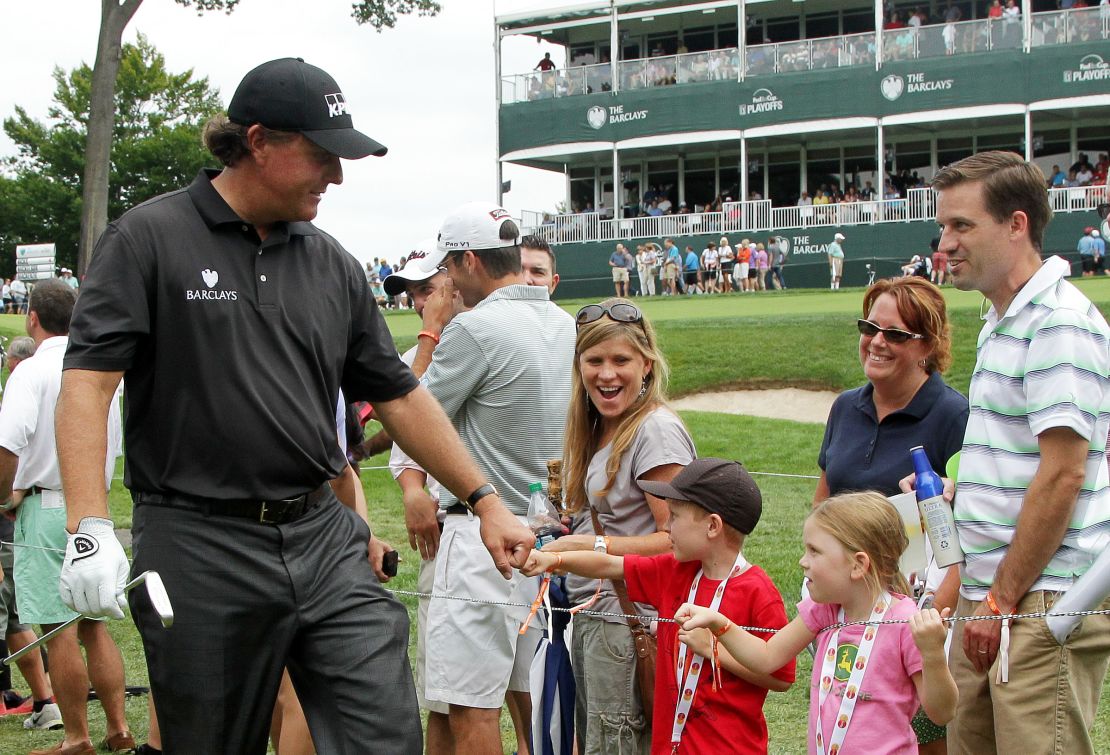
‘Bad rap’
O’Donoghue is a “huge fan” and recounts a tale where Mickelson, with whom he had developed a fledgling acquaintance over his son and the American’s shared birthday, called him “Seamus” during a TV interview. The next time they met, two years later, the first thing Mickelson did was apologize.
“He looks at me and says, ‘Shane, I am so embarrassed about calling you Seamus,’” said O’Donoghue.
He added: “He’s the consummate pro and he’s an amazing ambassador for the game and the best PGA Tour player of the modern era in terms of what he gives back. He delivers on so many different levels.
“He gets a bad rap from some of the players and some of the media, that he’s not that sincere, that it’s a bit of an act. I’ve yet to see that side of him. My dealings with him have always been 100% professional and I’ve always been very impressed by him.”
Critics also point to his well reported fondness for high-stakes gambling and the legendary trash-talking Tuesday money games with a close coterie of colleagues.
Then there are the links to the fraud case of Las Vegas gambler William “Billy” Walters (Mickelson himself didn’t face any charges), in which he was forced to pay back $1 million linked to insider trading, following the repayment of a $2 million gambling debt to Walters in 2012.
One of Mickelson’s most controversial moments came in the Team USA news conference after losing the 2014 Ryder Cup at Gleneagles, Scotland. Asked what didn’t work compared to the winning side in 2008, Mickelson threw captain Tom Watson, sitting a few seats to his left, under the bus.
“I think he got caught out a bit by being too blunt and oversharing a little bit,” said O’Donoghue.
“But these guys are gladiators – they all want to win and they all have their own opinions.”
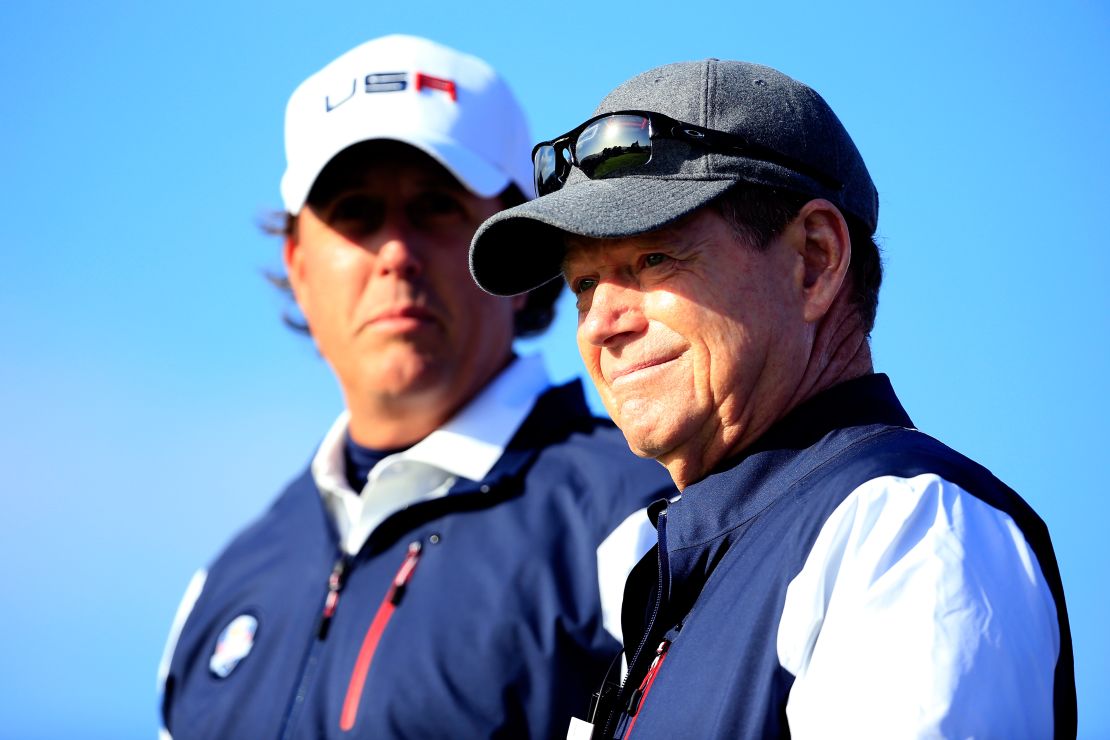
Mickelson, it seems, will continue to divide opinion, at least off the course.
On it, he is in line for a 12th straight Ryder Cup appearance this year. A first victory on European soil remains one of his remaining “big goals.” He’ll have to do it for the first time without Bones on the bag after the pair’s amicable split in June 2017.
Mickelson wanted to freshen things up and has turned to his brother Tim, a former golf coach at Arizona State and ex-agent to rising Spanish star Jon Rahm.
Still pressing, still hungry, still trying to get better.
Masters, majors, grand slams, Ryder Cups – the thrill is very much still with Phil.




